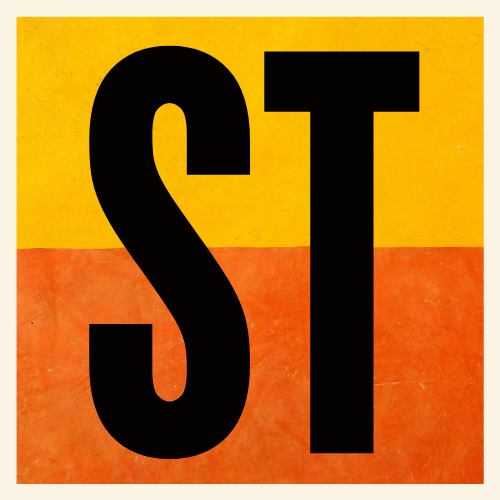Thinker vs. Doer: Why Execution Matters More Than Ideas, Ralph Waldo Emerson’s Wisdom
Ralph Waldo Emerson’s wisdom on the “Thinker vs. Doer” dilemma shows why ideas alone won’t change your life; action will. Learn how to bridge the gap between thinking and doing, avoid the scholar’s trap, and turn knowledge into mastery.

A Thought That Halted Me in My Tracks
A few days ago, while reading an old collection of essays, I stumbled upon a quote that made me pause:
“But the idea and execution are not often entrusted to the same head. There is some incompatibility of good speculation and practice, for example, the failure of monasteries and Brook Farms. To hammer out phalanxes must be done by smiths; as soon as the scholar attempts it, he is half a charlatan.” ~ Ralph Waldo Emerson
I just sat there for a moment, turning these words over in my mind. Here was a piece of wisdom written centuries ago, yet it struck me as something I had experienced repeatedly. The divide between thinking and doing is still as real today as it was in Emerson’s time.
It reminded me of moments when I had brilliant ideas but failed to take action, or when I acted without a solid strategy and ended up going in circles. I realized how many people, including myself, have been caught in this paradox. And the more I reflected on Emerson’s words, the more I saw how deeply they apply to modern life.
This is my interpretation of his words, shaped by my own experiences. If it sparks a different insight in you, I’d love to hear your perspective.
Let’s break it down further.
Thinker vs. Doer: The Real Secret to Success
Why are ideas and execution rarely found in the same person?
Emerson suggests that the person who generates ideas is often not the same person who executes them. Why? Because thinking deeply and acting decisively require different skill sets:
- The Thinker (Visionary): A strategist, philosopher, or creative who imagines possibilities and sees what others miss.
- The Doer (Executor): Someone who brings ideas into reality through persistence, skill, and action.
Most people lean toward one or the other. History proves this:
- Plato envisioned an ideal society, but it was Aristotle who focused on practical application. Aristotle’s famous quote, “We are what we repeatedly do. Excellence, then, is not an act, but a habit,” underscores the importance of disciplined action.
- Steve Jobs had the vision, but Wozniak built the first Apple computer.
- Elon Musk has ideas for Mars, but engineers turn them into rockets.
So, where does that leave us? If you are only a thinker, you may never execute. You may work hard without a strategic vision if you are only a doer.
Lessons from Failed Utopias: Brook Farm and Monasteries
Emerson references Brook Farm, a failed utopian experiment in Massachusetts (1841-1847). Intellectuals wanted to build a self-sustaining community based on transcendentalist ideals. But while they were great at theorizing, they lacked the practical skills to make it work.
This pattern repeats throughout history. Many well-intentioned projects, businesses, and self-improvement plans collapse because they fail to connect vision with execution.
How many people say they want to start a business, write a book, or change their lives, yet never take action?
The Scholar vs. The Practitioner: Who Succeeds?
“To hammer out phalanxes must be done by smiths; as soon as the scholar attempts it, he is half a charlatan.”
A phalanx was an ancient military formation that required well-trained soldiers equipped with weapons forged by skilled blacksmiths. Emerson uses smiths as a metaphor for practitioners, artisans, and skilled workers, people who execute rather than theorize.
He is saying that just as only a trained blacksmith can forge strong weapons, only those with real experience can effectively execute ideas.
Scholars who attempt to build something without hands-on expertise risk becoming mere theorists or, as Emerson puts it, charlatans.
At least, that’s how I interpret it. And honestly, I’ve seen this play out in real life. Someone can have all the knowledge in the world, but it remains just theory if they don’t implement it.
This applies to business, self-improvement, and leadership:
- A business coach who has never built a business lacks credibility.
- A manifestation guru who never manifested anything is just selling hype.
- A fitness trainer who has never trained anyone is just repeating textbook knowledge.
In short, knowledge without experience is hollow.
The Path from Theory to Mastery: Bridging the Gap Between Thinking and Doing
Many people stay stuck at the idea stage because they don’t know how to execute it. Others take random action without a clear roadmap. The real magic happens when you bridge the gap between thinking and doing.
1. Move from Thinking to Doing
- If you have a great idea, commit to the first imperfect step.
- Surround yourself with people who complement your weaknesses (Thinkers need Doers and vice versa).
- Understand that mastery only comes through action, not just knowledge.
2. The Philosophy Behind My Courses: From Theory to Practice
After spending over 20 years in learning and leadership development across multinational companies, I have seen firsthand how people struggle to bridge the gap between knowledge and action. This is why my courses follow a simple but powerful structure:
Theory → Practice → Mastery
- Theory: Learn the foundational wisdom.
- Practice: Apply the knowledge in real-life situations.
- Mastery: Internalize it until it becomes second nature.
This is not just about consuming content, it’s about transformation. Whether it’s manifestation, intuition, or mental toughness, what I teach isn’t just theory; it’s about execution and results.
This principle applies to everything, including how we create our reality, not just to business, leadership, or skill-building.
Manifestation is Execution in Motion
Many misunderstand manifestation, believing it’s just about visualizing and waiting for results. But true manifestation is not passive; it is the perfect fusion of thought and action.
Just as Emerson warns that ideas without execution remain hollow, manifestation without aligned action remains unfulfilled potential. Thinking creates the vision, but action brings it to life. You don’t just wish for success, you embody it through deliberate steps, persistence, and real-world application.
The universe responds to movement. Whether manifesting a new career, financial freedom, or personal growth, the key lies in bridging the gap between intention and execution. The thinkers imagine, the doers create, and those who master both, they manifest their reality.
How Will You Apply This?
We’ve discussed Emerson’s words and how they still hold today. But the real question is, how will you use this wisdom?
Will you remain a thinker or take action and execute your ideas?
If this resonates with you, I invite you to take action today. Sign up for my newsletter to continue receiving deep insights, practical wisdom, and strategies to help you think better and act smarter. Let’s build a community of like-minded thinkers and doers who elevate each other to new levels of success.





